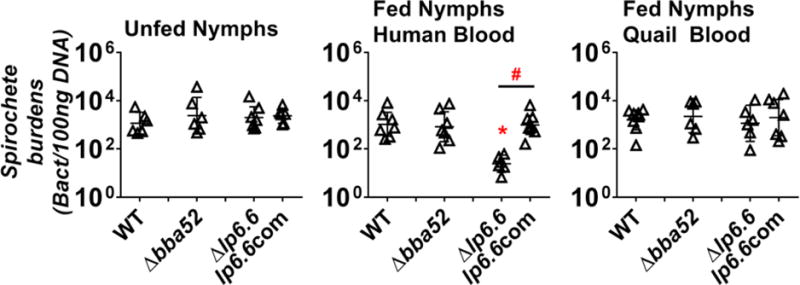Figure 3. Lp6.6 confers B. burgdorferi survival in nymphal ticks feeding on human but not quail blood.

I. scapularis nymphal ticks infected with B. burgdorferi strain B31-A3 (WT), a bba52-deficient strain (Δbba52), an lp6.6-deficient strain (Δlp6.6), or this strain producing Lp6.6 (lp6.6com) were placed into artificial feeding chambers. The chambers were then placed into six-well cell culture plates with blood from humans or quail for 5 days. The blood feeding of nymphs carrying the spirochete strain lp6.6com was performed in a separate experiment. The bacterial loads in the nymphs prior to blood feeding (Unfed nymphs, Left panel) or after feeding on human blood (Fed nymphs human blood, Middle panel) or quail blood (Fed nymphs quail blood, Right panel) for 5 days were determined by qPCR. The results were then normalized to 100 ng total DNA. Each triangle indicates the bacterial burden derived from a single nymph. Shown are the geometric mean of bacterial loads ± 95% confidence interval of six nymphs per group. As all datasets were not in a normal distribution using a D’Agostino-Pearson Omnibus normality test, statistical significance was determined using a non-parametric Kruskal-Wallis test followed by Dunn’s multiple comparisons test. The asterisk (*) indicates a significant difference (p < 0.05) in spirochete burdens relative to the strain B31-A3. The pound sign (#) indicates a significant difference (p < 0.05) in spirochete burdens between the Δlp6.6 and lp6.6com strains. The p-values between each group are shown in Supplemental Table 3.
